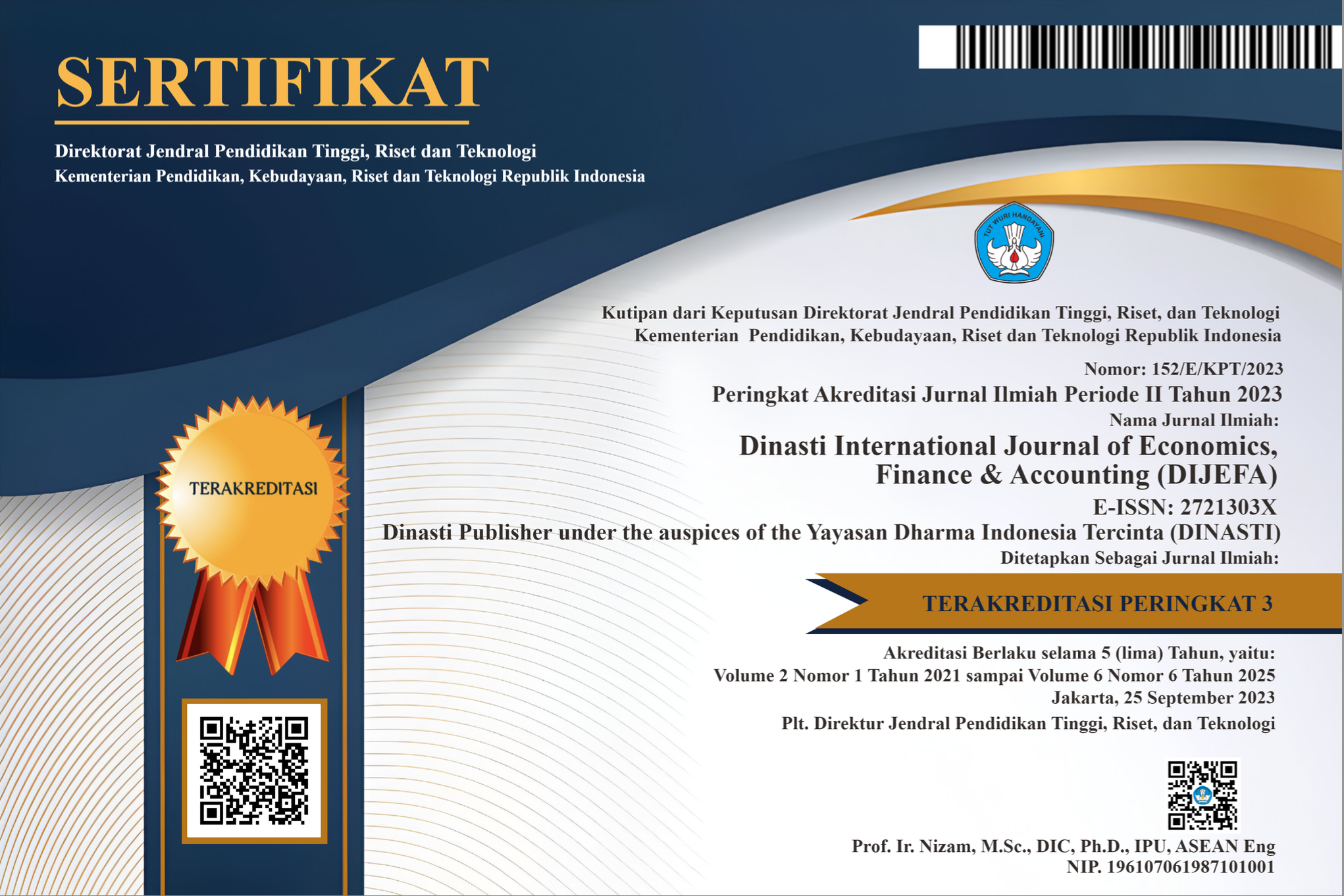CONTRACTOR SELECTION ASSESSMENT STRATEGY IN THE UPSTREAM OIL AND GAS INDUSTRY TOWARDS GREEN SUPPLY CHAIN MANAGEMENT
DOI:
https://doi.org/10.38035/dijefa.v1i3.314Keywords:
Analytic Hierarchy Process (AHP), contractors/suppliers selectionAbstract
Nowdays, the level of business competition in managing the upstream oil and gas industry is getting higher, therefore oil and gas companies need to improve their performance and optimize the existing resources in the company. This must also be considered in efforts to manage and save the environment, which is currently the main focus of governments and businesses to preserve the environment. In addition to internal improvements were made, improvements are also needed on the part of contractors/suppliers to support this. In this regard, this study was conducted to develop a strategy for conducting an assessment in the contractors selection/suppliers in the upstream oil and gas industry with the aim of implementing Green Supply Chain Management with the Analytic Hierarchy Process (AHP) method. This study maps the evaluation criteria and sub-criteria in the contractors selection and obtains the main criteria in the contractors selection for the upstream oil and gas industry towards Green Supply Chain Management. Results of the study obtain 6 criteria and 23 evaluation criteria in the contractors selection in the upstream oil and gas industry towards Green Supply Chain Management. The two most important criteria obtained are the Environmental criteria and the Health and Safety criteria, both of which have an assessment weight of more than 50% of the total assessment weight. The next criteria obtained are the Quality (Technical), Technical (Shipping), and Price (Quality) criteria, where these criteria are taken into account in the selection of contractors for the upstream oil and gas industry towards Green Supply Chain Management, so that the spirit of competition remains with the contractor and companies have many options contractor to achieve Green Supply Chain Management.
References
[2] Pratiwi, I., MZ, H., & Aprilyanti, S. (2018). Pemilihan Supplier Terbaik Penyedia Barang Consumable Menggunakan Metode Analytical Hierarchy Process (Studi kasus di Departemen Pengadaan Barang PT. Pusri). Jurnal Manajemen Industri dan Logistik, Vol. 2(2), 147-158.
[3] Handfield, R., & Nichols, Jr., E. (2002). Supply chain redesign: Transforming supply chains into integrated value systems. New Jersey: Financial Times Prentice Hall.
[4] Luthra, Sunil et. al. (2010). Barriers to Implement Green Supply Chain Management in automobile industry using interpretative Structural Modelling Technique-An Indian Perspective. Journal of Industrial Engineering and Management, 231 – 257.
[5] SKK Migas. (2017). PTK-007 Revisi-IV/PTK/2017, Buku Kedua: Pedoman Pelaksanaan Pengadaan Barang dan Jasa. Jakarta: SKK Migas.
[6] Saaty, T. L. (1980). The Analytical Hierarchy Process. New York: Mc Graw Hill.
[7] Saaty, T. L. (1998). The Analytic Hierarchy Process: Planning, Priority, Setting, Resource Allocation. Ellsworth Ave, Pittsburgh: RWS Publications
[8] SKK Migas. (2018). PTK-005 Revisi-II/PTK/2018, Pedoman Tata Kerja Pengelolaan Kesehatan, Keselamatan Kerja, dan Lindungan Lingkungan Di Kegiatan Usaha Hulu Minyak dan Gas Bumi. Jakarta: SKK Migas.
[9] Budiaji, W. (2013). Skala Pengukuran dan Jumlah Skala. Jurnal Ilmu Pertanian dan Perikanan, Vol. 2 (2), 127-133.
Downloads
Published
How to Cite
Issue
Section
License
Authors who publish their manuscripts in this journal agree to the following conditions:
- The copyright on each article belongs to the author(s).
- The author acknowledges that the Dinasti International Journal of Economics, Finance & Accounting (DIJEFA) has the right to be the first to publish with a Creative Commons Attribution 4.0 International license (Attribution 4.0 International (CC BY 4.0).
- Authors can submit articles separately, arrange for the non-exclusive distribution of manuscripts that have been published in this journal into other versions (e.g., sent to the author's institutional repository, publication into books, etc.), by acknowledging that the manuscript has been published for the first time in the Dinasti International Journal of Economics, Finance & Accounting (DIJEFA).


























































